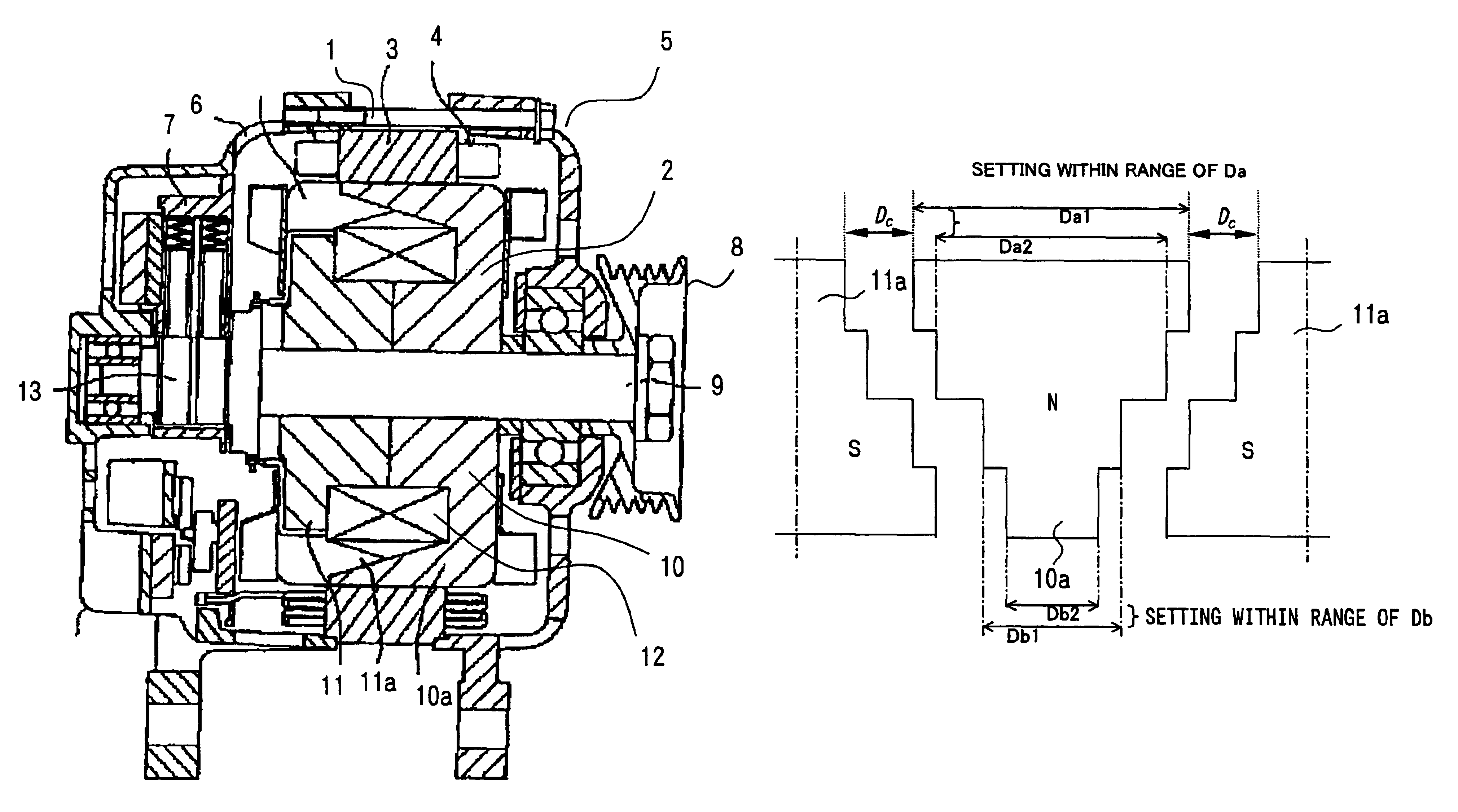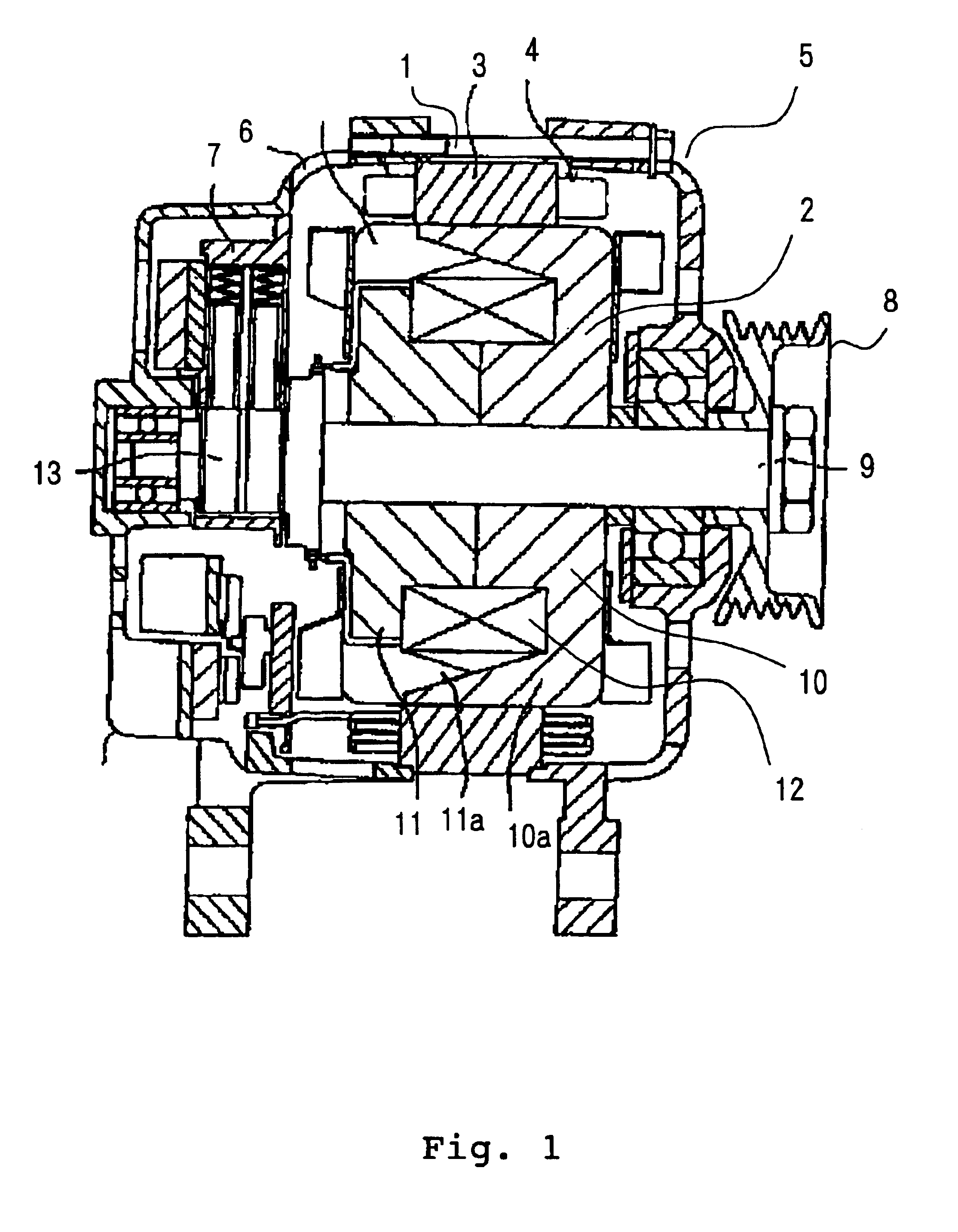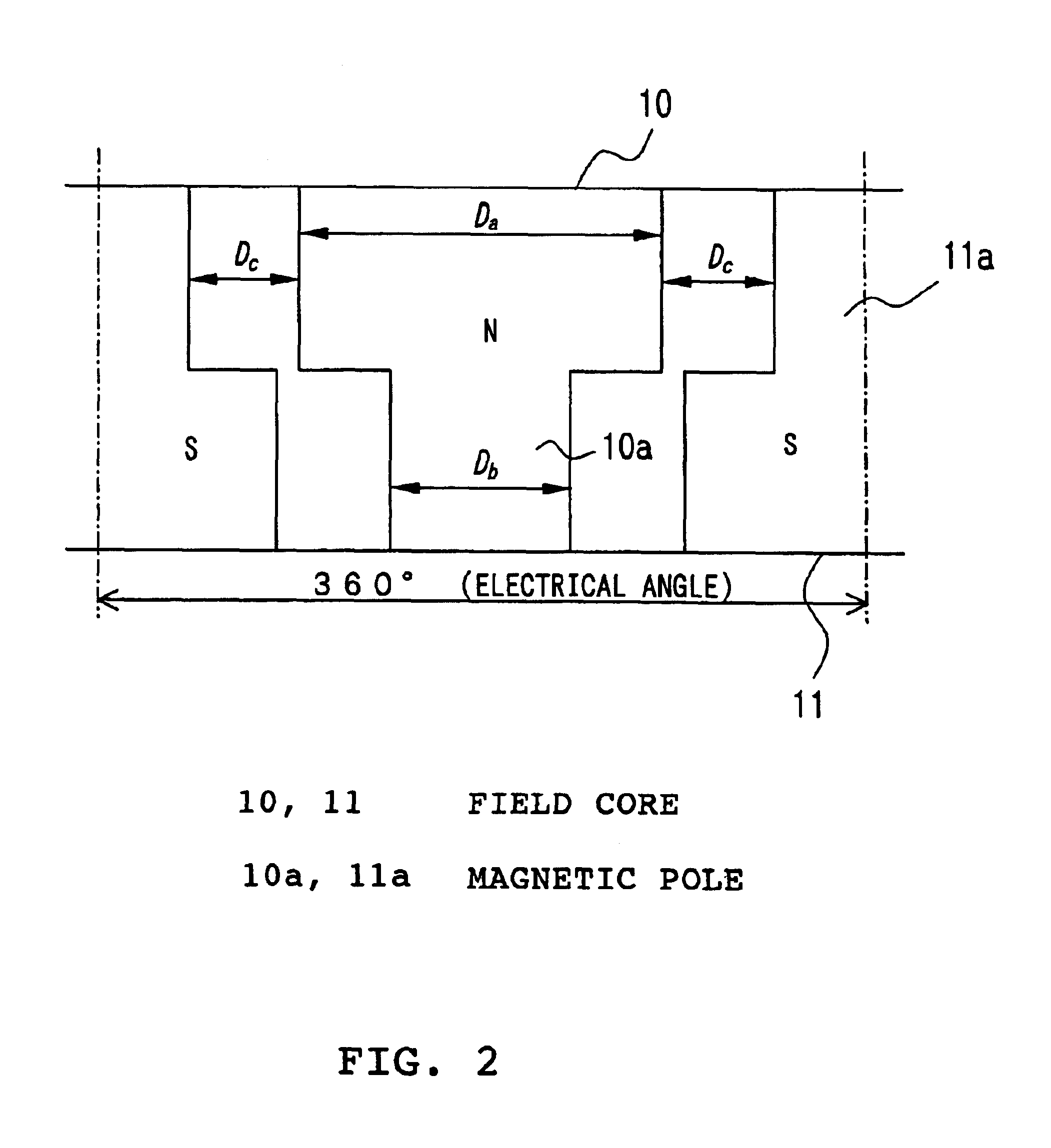Rotating electrical machine for vehicle
a technology of rotating electrical machines and vehicles, which is applied in the direction of dynamo-electric machines, synchronous generators, magnetic circuit shapes/forms/constructions, etc., can solve the problems of mechanical reliability damage, difficult manufacture of such shapes, and degraded characteristics, and achieve excellent productivity.
- Summary
- Abstract
- Description
- Claims
- Application Information
AI Technical Summary
Benefits of technology
Problems solved by technology
Method used
Image
Examples
embodiment 1
FIGS. 1 to 3 are for explaining a rotating electrical machine for a vehicle according to embodiment 1 of the invention, and FIG. 1 is a whole structural sectional view of the rotating electrical machine for a vehicle. FIG. 2 is a developed view showing the shapes of magnetic poles of rotor cores and shows a case where each of the shapes of the magnetic poles has a two-step structure. FIG. 3 is a characteristic view showing the ratio of the third harmonic to the fundamental wave, that is, the relative third harmonic content, with respect to a clearance between magnetic poles.
In FIG. 1, the rotating electrical machine for a vehicle is constituted by a stator 1 and a rotor 2. The stator 1 is constituted by an armature core 3 having an armature winding 4, a front bracket 5 and a rear bracket 6 for holding the armature core 3 from both sides, a brush structure 7 for supplying a current to the rotor described later, and the like. The armature winding 4 is the winding corresponding to mult...
embodiment 2
FIG. 4 is a characteristic view showing the relative fifth space harmonic content with respect to the magnetic pole width Da (electrical angle) or Db, and in this embodiment, an attempt is made to reduce the fifth space harmonic. The fifth space harmonic of the rotor 2, next to the third space harmonic, influences the electromagnetic exciting force and the torque ripple by the interaction with the slot harmonic of the armature core 3, and is required to be reduced together with the third space harmonic.
In the two-step structure magnetic pole as shown in FIG. 2 in the embodiment 1, the relative fifth space harmonic content is changed by the magnetic pole widths of the magnetic poles 10a and 11a as shown in FIG. 4. With respect to the magnetic pole widths Da and Db in FIG. 2, the magnetic pole width for reducing the fifth space harmonic is expressed by
(206°−Dc)≦Da≦(226°−Dc) (2)
(134°−Dc)≦Db≦(154°−Dc) (3),
and in the case where the clearance Dc between the magnetic poles is 60° in elec...
embodiment 3
FIG. 5 is a developed view of a magnetic pole used for a rotating electrical machine for a vehicle according to embodiment 3 of the invention, and in this embodiment, as shown in the drawing, the shape of the magnetic pole is made to have a multi-step structure. In the two-step structure of FIG. 2 described in the embodiment 1, in order to make the clearance Dc between the magnetic poles constant over the whole length of the magnetic pole, the step part of the N pole and the step part of the S pole have the same position in the axial direction, and accordingly, unless the respective values of Da and Db described in the embodiment 2 are set to values close to minimum values in the ranges of the expression (2) and the expression (3), a distance between adjacent magnetic poles at the step parts becomes small, and a leak magnetic flux between the magnetic poles is increased. The increase of the leak magnetic flux results in the lowering of the performance in the case where the function ...
PUM
 Login to View More
Login to View More Abstract
Description
Claims
Application Information
 Login to View More
Login to View More - R&D
- Intellectual Property
- Life Sciences
- Materials
- Tech Scout
- Unparalleled Data Quality
- Higher Quality Content
- 60% Fewer Hallucinations
Browse by: Latest US Patents, China's latest patents, Technical Efficacy Thesaurus, Application Domain, Technology Topic, Popular Technical Reports.
© 2025 PatSnap. All rights reserved.Legal|Privacy policy|Modern Slavery Act Transparency Statement|Sitemap|About US| Contact US: help@patsnap.com



